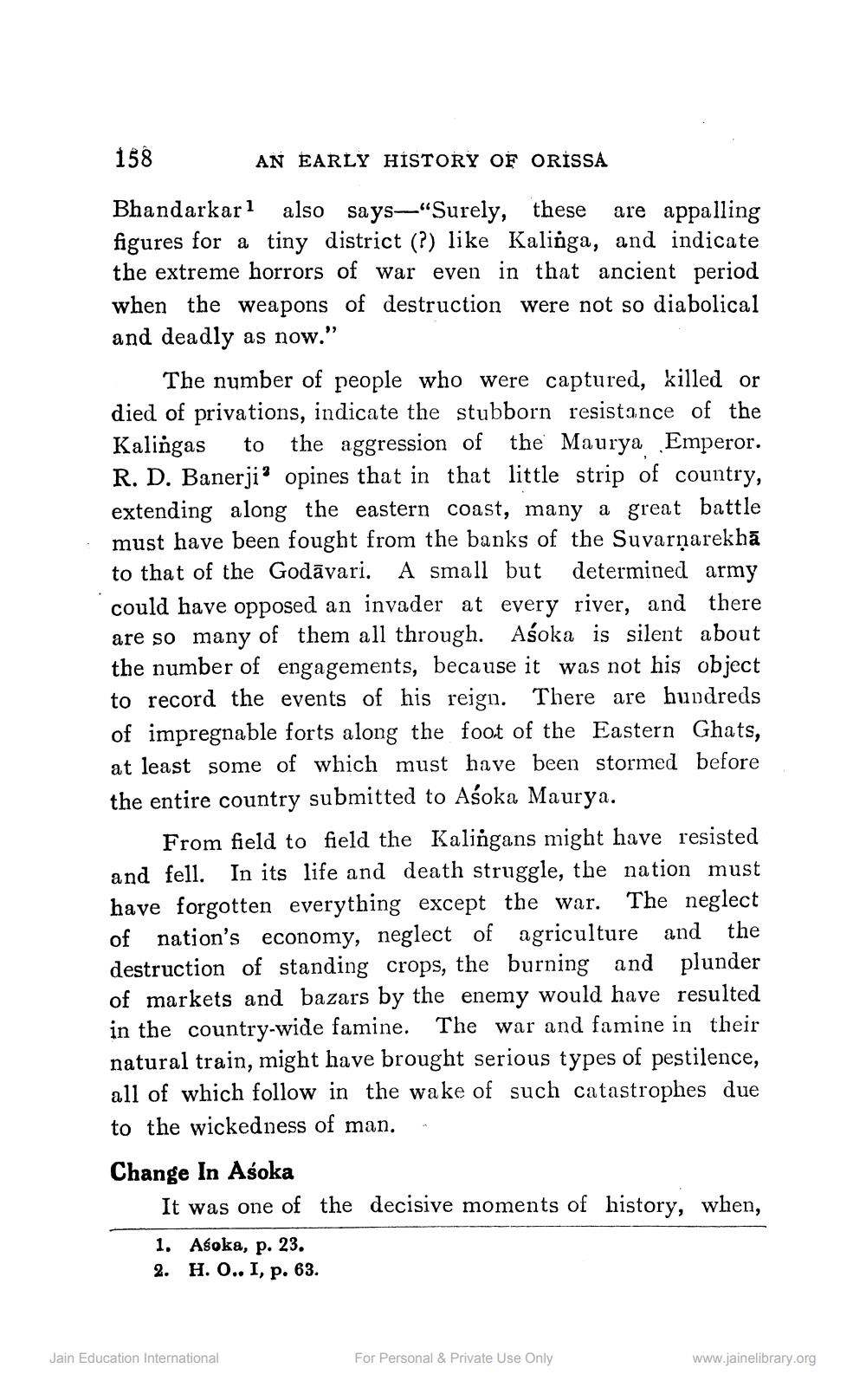________________
158
AN EARLY HISTORY OF ORISSA
Bhandarkar1 also says—"Surely, these are appalling figures for a tiny district (?) like Kalinga, and indicate the extreme horrors of war even in that ancient period when the weapons of destruction were not so diabolical and deadly as now.”
The number of people who were captured, killed or died of privations, indicate the stubborn resistance of the Kalingas to the aggression of the Maurya Emperor. R. D. Banerji' opines that in that little strip of country, extending along the eastern coast, many a great battle must have been fought from the banks of the Suvarnarekhā to that of the Godāvari. A small but determined army could have opposed an invader at every river, and there are so many of them all through. Asoka is silent about the number of engagements, because it was not his object to record the events of his reign. There are hundreds of impregnable forts along the foot of the Eastern Ghats, at least some of which must have been stormed before the entire country submitted to Aśoka Maurya.
From field to field the Kalingans might have resisted and fell. In its life and death struggle, the nation must have forgotten everything except the war. The neglect of nation's economy, neglect of agriculture and the destruction of standing crops, the burning and plunder of markets and bazars by the enemy would have resulted in the country-wide famine. The war and famine in their natural train, might have brought serious types of pestilence, all of which follow in the wake of such catastrophes due to the wickedness of man. - Change In Asoka
It was one of the decisive moments of history, when, 1. Asoka, p. 23. 2. H. O.. I, p. 63.
Jain Education International
For Personal & Private Use Only
www.jainelibrary.org




